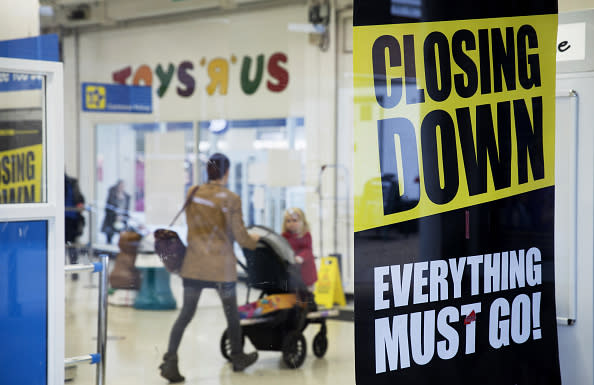Toys R Us is just the beginning of retail defaults in 2018
Toys R Us, the iconic toy retailer which has been crippled by a heavy debt load, is closing or selling all its stores in the U.S.
While the retail apocalypse might be a myth, the list of retailers going into default has been growing: Tops Markets filed for bankruptcy last month, following Bon-Ton’s filing. In December, Charming Charlie filed for Chapter 11. Claire’s Stores, with $2 billion in debt, has hired restructuring advisers and is reportedly preparing to file for bankruptcy.
There’s more to come: retail defaults will peak in the first half of this year, according to a new Moody’s report. The default rate for retailers remains three times higher than that of American companies in general. Moody’s forecasts at least six retailers are in danger of defaulting over the next 12 months, citing household names including Sears and Neiman Marcus.
Smaller retailers are more vulnerable
Some people see the doom of Toys R Us dates back to its leveraged buyout by private equity firms, including Bain Capital and KKR, and real estate investment trust Vornado Realty Trust in 2005. The $6.6 billion deal left the toy retailer with more than $5.3 billion in debt secured by its assets, which it was never able to recover due to lackluster sales.
And Toys R Us is not alone. Retailers have been popular leverage-buyout targets for private equity firms. Such deals leave companies with heavy debt loads. Private equity shops use the debt the retailer itself issues to fund the buyout instead of its own capital. According to the Financial Times, more than half of the largest retail leveraged buyouts completed since 2007 have defaulted, gone into bankruptcy or are in distress.
“High leverage has proved problematic for the retail industry due to the industry’s inherent cyclicality and operating income challenges post-recession,” Moody’s noted.
Retailers are getting squeezed

As retailers amass debt with a limited ability to pay it back, a vicious cycle is created. Companies are downgraded by rating services and suppliers, who provide merchandise to stores, adopt tighter payment systems, or even the “cash on delivery” mode, making it more difficult for retailers to be liquid and do business. Some vendors for Toys R Us, for example, cut the company off when serious doubts emerged about its ability to refinance its debt, $7.9 billion according to the company’s bankruptcy filing in September.
Online competition has only made things worse. Amazon’s (AMZN) aggressive pricing strategy has severely squeezed traditional retailers’ profit margins. As online sales have been growing double digits since 2007, retailers with heavy debt load find it hard to cash in on the booming e-commerce industry. The debt weighs down retailers’ ability to invest in building out their online capabilities and keeping physical stores fresh. Retailers also become financially ill-equipped to offer consumers competitive prices.
As the monetary policy tightens and the Fed plans on interest rate hikes, refinancing options may be even more limited for retailers. “Better capitalized retailers continue to grow and prosper, the smaller, highly-leveraged retailers will struggle harder to compete and survive,” the Moody’s report said.
Krystal Hu is a reporter at Yahoo Finance. Follow her on Twitter
Read more:
Why Amazon cut hundreds of jobs


